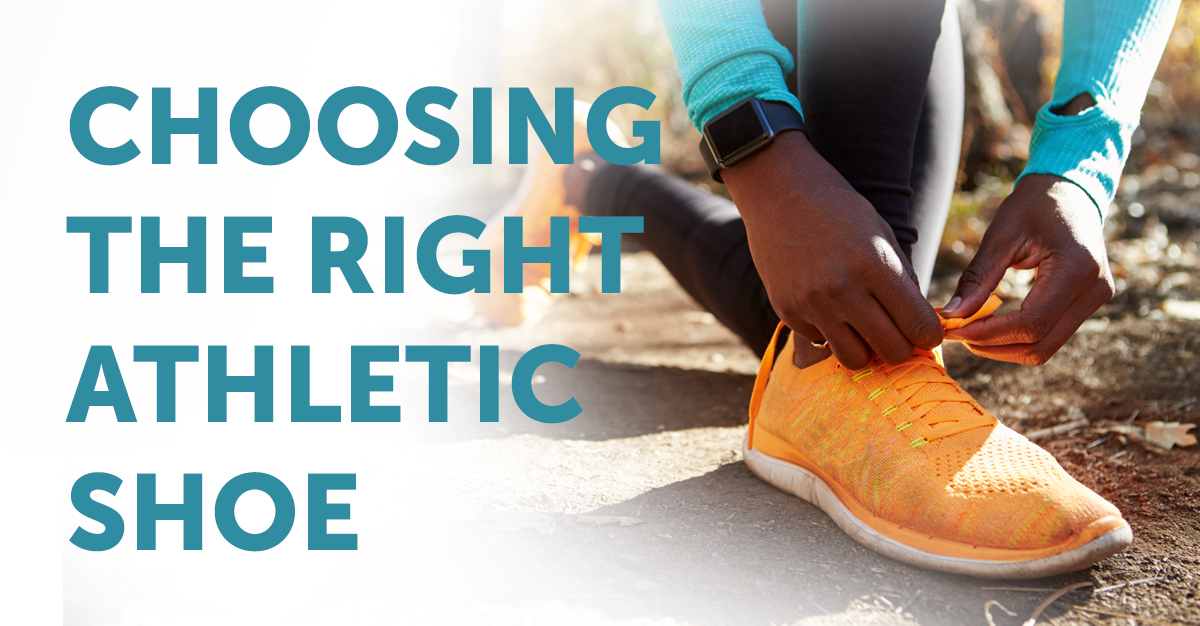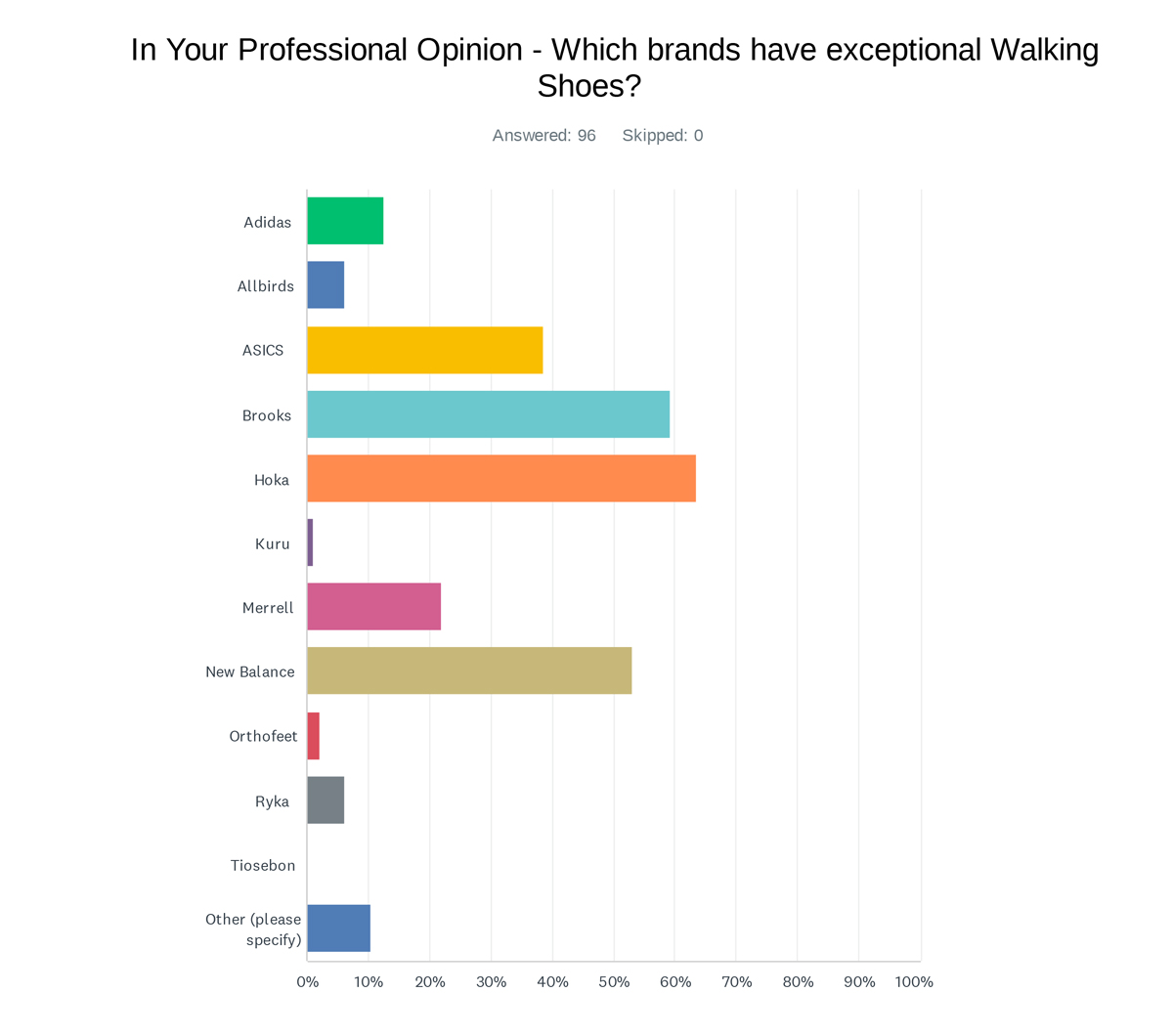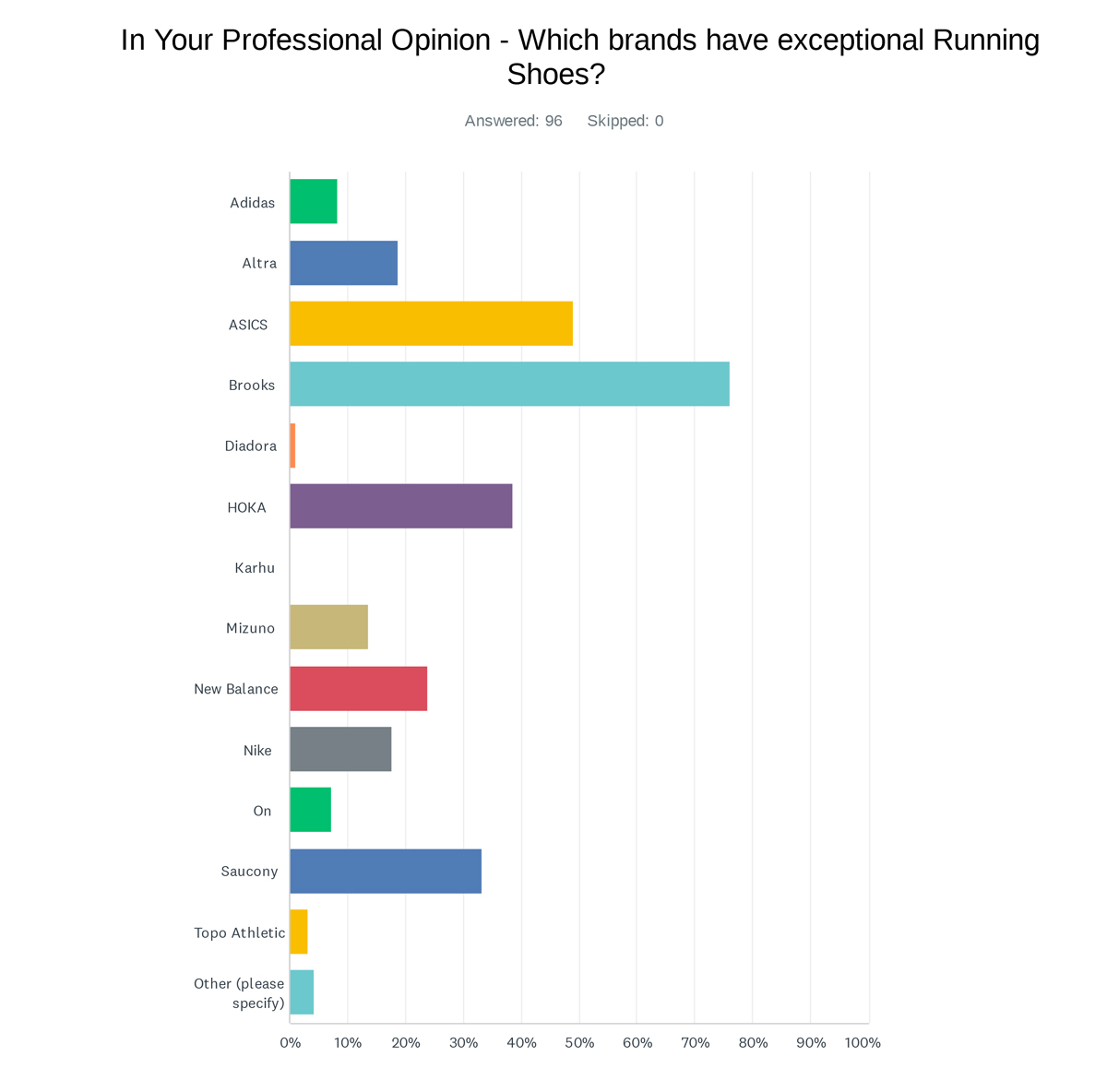
A good pair of shoes is one of the most essential parts of your workout gear and is critical to your safety. Wearing the wrong shoe can set you up for injuries like plantar fasciitis, shin splints, or even a total wipe-out! If the shoe fits your activity – wear it! So how do you choose the right athletic shoe? Let’s “walk” through the basics!
Choosing the Right Walking Shoe
Walking is one of those activities that can add years to your life -ask any centurion! When you walk to exercise, your heel hits the ground first before rolling gradually to the toe. This means you want a shoe with good shock absorption at the heel, particularly under the ball of the foot. Also, look for a shoe with a rocker bottom or slight rounding at the sole. This will help easily shift your weight from heel to toe.
The shoe should also be:
- Flexible along the arch area
- Rigid at the toe area
- Made with lightweight material
- Have a good amount of cushioning under the ball of the foot & arch area
Using the right walking shoe will reduce the chances of developing heel pain and burning & tenderness at the ball of the foot, which in many cases leads to plantar fasciitis.
The walking shoes our physical therapists are recommending:

Choosing the Right Running Shoe
If you’re one of those people that likes to get their heart rate up and going out for invigorating runs, there are a few things to keep in mind when finding the right pair of shoes to run in. The best running shoes are lightweight, flexible, have heel control, and overall great shock absorption. What makes a running shoe different than a walking shoe is the thicker heel and the sole is arched, with intricate treads that help propel you forward.
If you need a pair of shoes to run a marathon, the general rule of thumb is that the shorter the race distance, the flatter & lighter shoe you can get away with. Adding any extra unnecessary cushioning and weight to your shoes may affect your running time. For a 5K marathon, a racer may choose a more snug-fitting minimal flat, although a 10K or half marathon will likely require a roomier, more cushioned shoe.
If you prefer running through the unpaved trail with beautiful scenery but with uneven terrain, look for trail running shoes. This type of shoe offers even greater stability and support by having a more aggressive tread to help grip the ground and get better traction. Check out our Pre-Run Dynamic Stretching Routine to keep all the moving parts of your feet and legs running smoothly.
The running shoes our physical therapists are recommending:

Choosing the Right Cross-Training Shoe
Sometimes you just need a good pair of shoes to help you do a little bit of everything. Maybe your workout routine consists of walking, jogging, playing a game of basketball, and then hitting the yoga mat −cross-training shoes would be perfect for you. Also, if you want a pair of shoes that’ll get you through the day after you run some errands, reorganize your closet, and do some gardening −go with the cross-training shoes!
Cross-training shoes combine the running shoe’s flexibility at the forefoot and the walking shoe’s shock absorption. A good cross-training shoe has good traction, a thick and durable stable sole, cushioning for extra stability, and a solid upper to give you ankle support.
Once you’ve found your perfect training shoe, a general rule of thumb, is to replace them every 80 to 100 workout hours. A simple visual test can be your guide as well. If you notice excessive creasing or wear on the areas of the shoe that absorb the most load (the heel and ball of the foot), it’s time to toss them out. Damaged safety footwear can increase your risk of injury, so it is important to know when it’s time for a replacement.
More Shoe Tips to Consider
- Your feet swell throughout the day so it’s best to try shoes on around midday when your feet are the largest
- Running shoes can also cause pain before they look worn. This is because they lose the capacity to absorb shock. The guideline to replace running shoes is every 350 to 500 miles. Running shoes older than one-year-old may also cause pain because of changes in the sole with exposure to humidity or heat.
- Avoid narrow shoes that pinch your feet and look for shoes with a wide toe box, leaving ample room for your toes.
- If your feet tend to perspire, select shoes that are made from moisture-wicking or leather material.
- There should be some arch support in the shoe or the insert inside the shoe. Many shoes can be made to fit better simply by removing the factory insert and having a physical therapist order a custom-fitting orthotic. Ask your physical therapist about this!
Who knew there was so much to choosing the right shoes! If your feet feel uncomfortable or are in pain, ignoring this is a sure way to develop lingering issues in your feet, legs, hips, and lower back. Minimize your risk of foot or ankle problems and talk to a physical therapist to get the most out of your next activity or workout.
Resources:
How to Pick the Right Running Shoe (Runner’s World)
10 Points of Proper Shoe Fit (FootCare MD)


